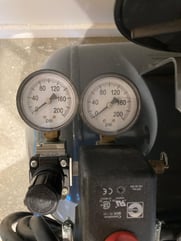- News and media
- About Atlas Copco
- Work with us
- Our complete offering
- Air compressor products, parts and service
- Air compressor industrial solutions
- Air dryers
- Air filters
- Air receivers and aftercoolers
- Gas compressors
- Gas generator
- Industrial condensate treatment solutions range
- Marine compressors
- Mobility compressors
- Oil-free air and nitrogen boosters
- Oil-free air blowers
- Process filters
- Process gas and air equipment
- Service and parts
- Used air compressors
- Vacuum pumps and abatement
- Industrial tools and solutions
- Air motors
- Assembly tools and solutions
- Articulated arms
- Controller floor stands & frames
- Customized solutions with Geared Front Attachment
- Electric assembly systems
- Electric assembly tools
- Error proofing solutions
- Fixtured assembly solutions
- Manual torque wrenches
- Mobile fixtured solutions
- Pneumatic assembly tools
- Quality assurance in tightening
- Torque reaction suspension & rail systems
- Workplace solutions & automation
- Workstation solutions
- Bolting solutions
- Drills
- Joining solutions
- Material removal tools
- Service
- 24/7 rental solutions
- Portable equipment
- Sustainable innovations virtual showroom
- Air compressor products, parts and service



Compressor Gauges and What You Need to Know
Download our free
and comprehensive
compressed air
manual
Depending on the air compressor unit you own, will depend on what type and how many gauges are on it.
Most modern air compressors use electronic controllers to monitor pressure and report readings with a digital gauge. Atlas Copco uses our Elektronikon controller to report readings.
But on piston compressors and other simpler machines you may find one or two gauges. One gauge will be related to the regulator, that controls the air, to show what pressure is leaving the compression chamber. Another gauge will monitor the pressure in the tank.
If you find yourself looking at an analog gauge, it is almost always a dial gauge that is read in PSI, measuring what the pressure of the air is in that specific space.
When reading gauges, it is important to know the difference between PSIA and PSIG:
- PSIA: pounds per square inch absolute or atmospheric
- PSIG: pounds per square inch gauge
Absolute pressure is 14.7 psi. Obtaining absolute pressure is basically starting from complete zero in a perfect vacuum. This means, when a gauge pressure is reading “zero” it equals our atmospheric pressure at that elevation (14.7 psi is typical value for sea level). So, what you’re really reading is (atmospheric pressure) – 14.7 = (gauge pressure).
A gauge is used to show you what your operating pressure is and let you know how much adjustment is needed. The adjustment is made via the pressure switch or a digital controller, for example a microprocessor controller, within Atlas Copco we call this the Elektronikon range, which has many models.
The pressure switch is designed to measure the pressure of the outlet of the piston pump. On select (CR) piston compressors there is a 175/135 psi stop/start mechanism. When activated, this means that when the tank gauge reads 175 psi, a signal is sent, and it turns off the motor. When the air is being used and the tank gauge drops below 135 psi, a signal is sent and turns the motor back on. The delta refers to the change in pressure, so in this case 175-135 = a delta of 40 psi. If you set your delta to 40 you can change your stop pressure and it will change what pressure the motor starts at while keeping the delta at 40 psi.
If a gauge doesn’t show zero when the unit is off and tank is empty, the gauge needs to be calibrated. There should be a screw or adjustment knob to turn the dial to zero when it’s off and that way, you know what pressure is being output relative to the ambient/atmospheric pressure.
Atmospheric pressure is assumed to be 14.7 psi for most of our technical data performance calculations but this base atmospheric pressure changes at different elevations in the USA. For example, for higher elevations like Colorado, the atmospheric pressure is lower and air compressors lose performance so they may need to be larger.
Want to know more about gauges and how they are used on air compressors? Contact an expert.






